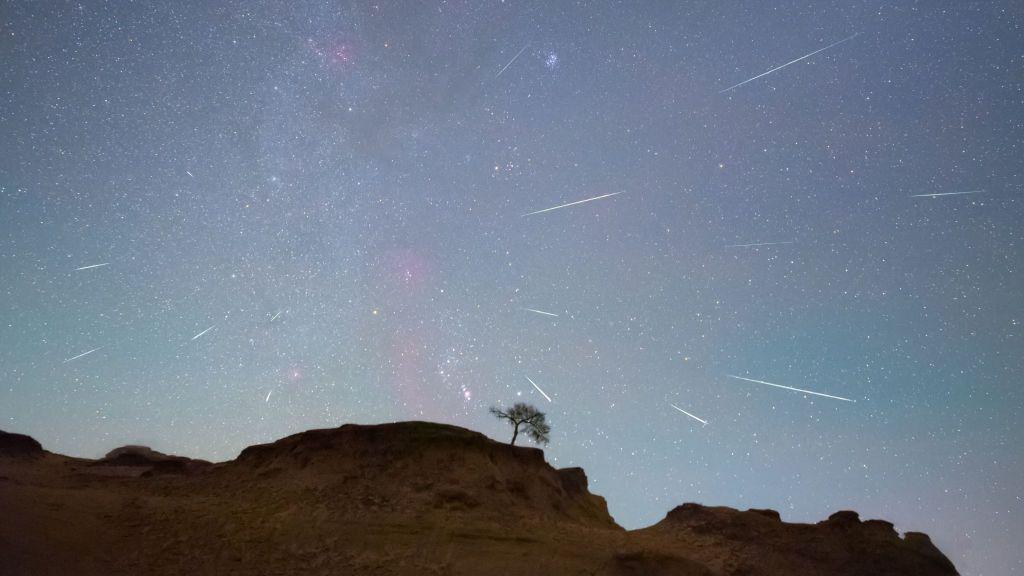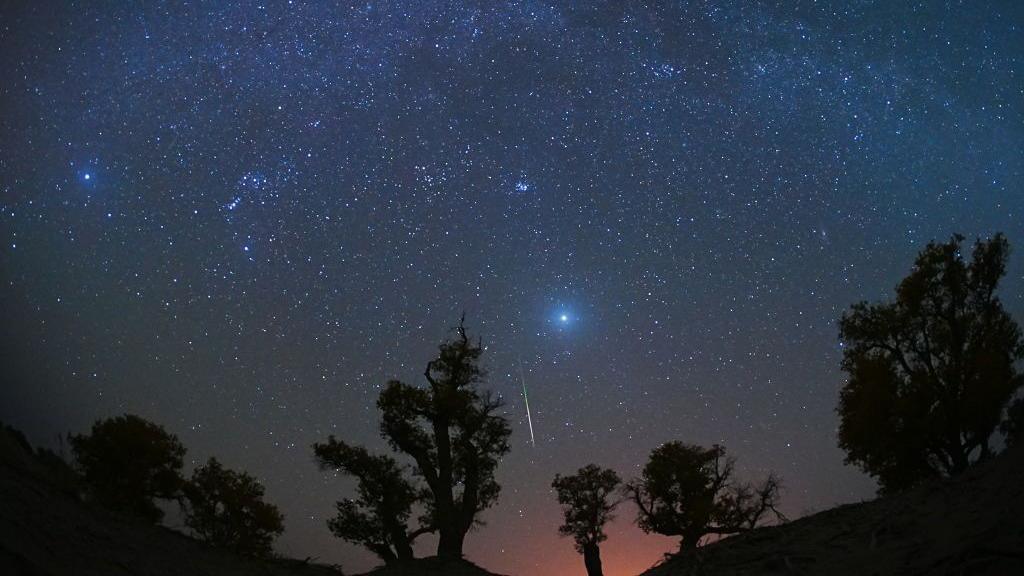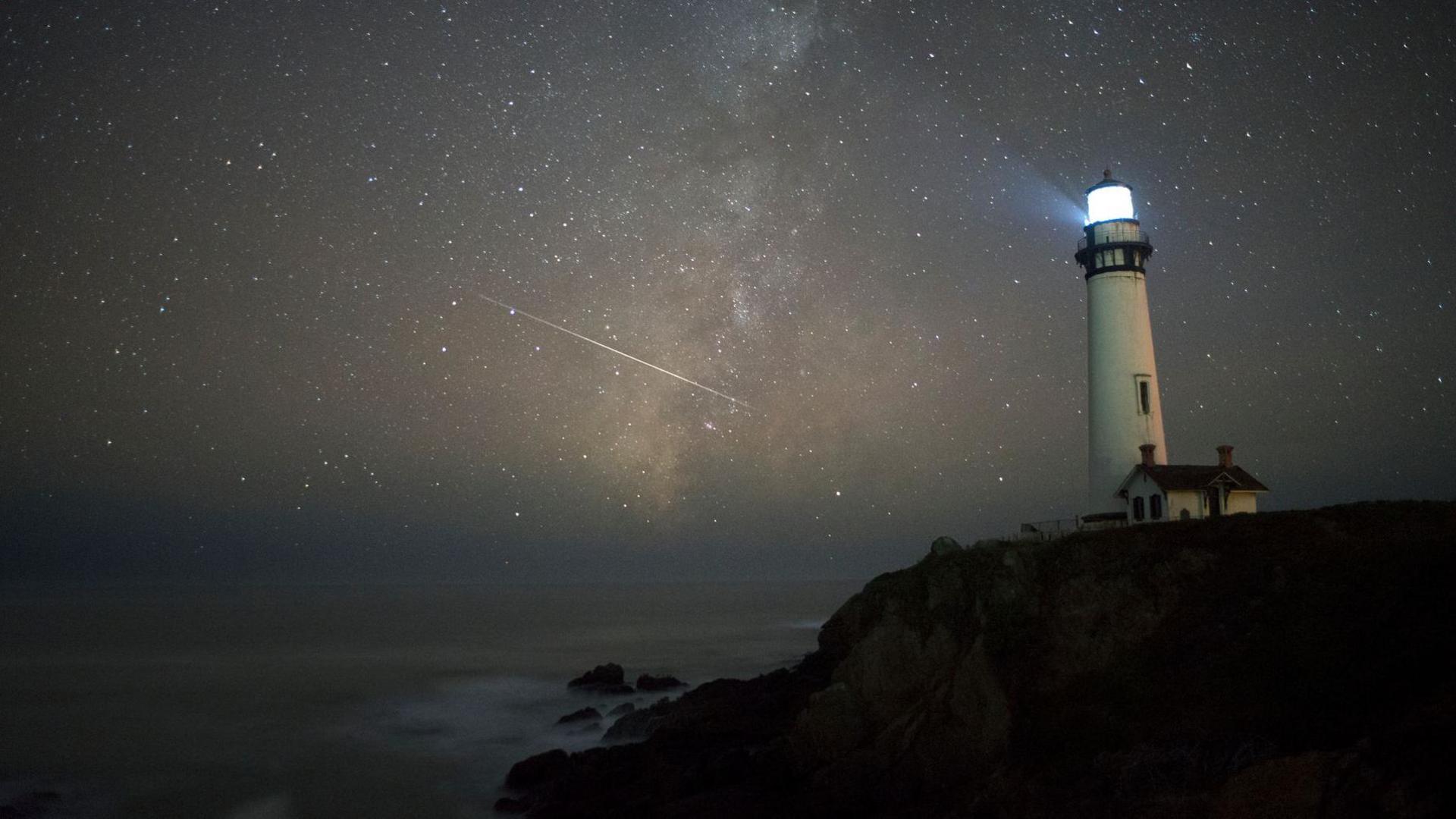Get ready for the Orionid meteor shower

- Published
One of nature's biggest firework displays - the Orionid meteor shower - is back!
The event takes place in the night skies every year, and is particularly known for the brightness and speed of its meteors.
This year, the shower is active from 2 October until 7 November and is due to peak around 22 October.
Nasa describes the Orionids as "one of the most beautiful meteor showers of the year."
Find out more about the Orionids below and don't forget to let us know in the comments if you're planning on watching the meteor shower.
More space news
Nasa reveals new astronauts for Moon and Mars missions
- Published23 September
Supermassive black holes aren't quite as big as experts thought
- Published25 September
Nasa has discovered 6,000 worlds beyond our Solar System
- Published19 September
What is the Orionid meteor shower?

The Orionid meteor shower seen from Yuli County, China in 2023
The meteors seem to originate from a point in the constellation of Orion, which is where their name comes from.
The visible trails are clumps of debris left behind by the famous Halley's Comet as it follows its orbit around the sun.
The debris enters our planet’s atmosphere at speeds of around 41 miles per second - now that's fast.
It vaporises, which means something turns from a solid or liquid into a gas, from friction with the air causing the streaks of light we call meteors.
These can last in the sky from several seconds to minutes.
Halley's Comet is only seen from Earth about once every 75 years - the next time is thought to be around the year 2061, so don't worry, you haven't missed it recently!
The Orionids is one of two meteor showers created by debris from Halley's Comet.
The other is the Eta Aquariids meteor shower, which appears earlier on in the year, around May.
When will the Orionid meteor shower be visible?

Here the meteors can be seen in the sky in California
In 2025, the Orionid meteor shower takes place between 2 October and 7 November.
It is due to peak for about a week around 22 October.
How can you see the Orionid meteor shower?
Get some top stargazing tips from a space expert
Once you know when a meteor shower is happening, you don't need a lot of fancy equipment like a telescope.
You just need a clear night with no clouds, warm clothes and some patience.
It's important to wrap up warm, as you might be sitting still for a long time - don't get cold.
Get in a comfy position, perhaps lying back on a chair, so you don't strain your neck, turn off any lights you can and go to the darkest part of the garden.
Give your eyes about 20 minutes to adjust to the darkness, then sit back, keep watching and enjoy.
Happy meteor hunting!
